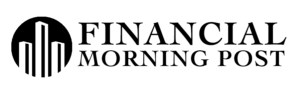Popular zero-fee trading app, Robinhood (RBNHD), has been admired and vilified in equal measure. On one hand, it has been praised for helping introduce many younger investors to the art and science of wealth-creation through stock markets while, on the opposite side of the spectrum, it has been criticized as being instrumental in creating an era of ‘cult stocks’ and get-rich-quick pump-and-dump schemes.
Indeed, Robinhood is facing regulatory scrutiny after the GameStop trading frenzy of a few weeks ago and has been accused of “luring people who use the market for gambling.’’
Yet, those could be the least of Robinhood’s concerns at the moment.
Robinhood’s zero-app trading model is now facing severe criticism, and has even been compared with prominent internet companies such as Alphabet Inc.’s (NASDAQ:GOOG) subsidiary, Google and Facebook Inc. (NASDAQ:FB) and even Visa Inc.(NYSE:V), which seemingly offer free services–but at the cost of the user’s privacy.
According to Quartz, the latest bids in the secondary market for Robinhood shares equate to a valuation of a staggering $40 billion, which does not appear far-fetched considering that Robinhood shares jumped 50% in January alone at the height of the GameStop madness. Robinhood was last valued at $11.7 billion in its private fundraising round in September.
These developments could not have come at a worse time, with Bloomberg recently reporting that Robinhood was eyeing an initial public offering (IPO) in March.
Paying For Order Flow (PFOF)
At the center of Robinhood’s maelstrom is a controversial business practice known as Paying For Order Flow, or PFOF in short.
PFOF is Robinhood’s golden goose, accounting for ~40 percent of its revenue as per Bloomberg News.
But don’t let the trading jargon confuse you; PFOF is a pretty straightforward concept that works like this: Whenever someone executes a stock trade on the Robinhood platform, the company gets the actual stock from a third-party known as a “market maker.” The market maker sells the stock to Robinhood for a small premium compared to what it paid for the stock. The tiny premiums, repeated millions of times, amount to big money for the likes of Citadel Securities, one of Robinhood’s most prominent market makers.
Obviously, it’s in the interest of market makers like Citadel that Robinhood routes as many stock orders in their direction as possible, a privilege which they are happy to pay for generously. That is what is known as payment for order flow, a model that Robinhood has turned it into a real mint.
Indeed, the New York Times has calculated that Robinhood made nearly $19,000 from selling user orders per dollar in the average user’s account in the first quarter of 2020 alone. That’s huge, considering that the average account held just $4,800. In comparison, older brokers made much less per user account, with TD Ameritrade making $1,881, E-Trade $1,326, and Charles Schwab $195.
Robinhood CEO Vlad Tenev hasn’t clarified why market makers are able to make so much more off Robinhood customers though possible answers such as Robinhood users trading more frequently or accepting worse prices, or both have been advanced. Indeed, in 2019, a regulator fined Robinhood $1.25 million for not finding its users the best deals though Robinhood insists that it does factor payments by market makers to determine where to route orders.
A Whole New Ballgame?
PFOF, the broker model that has helped Robinhood grow rich and command an impressive pre-IPO valuation of $40B, is actually not that new.
Three decades ago, Doug Atkin, CEO of trailblazing electronic trading platform Instinet, faced off with Bernie Madoff over PFOF. Atkins contended that payment for order flow isn’t right and should be outlawed while Madoff–he was the first to pay them big bucks for channeling their trades to a market make– defended the practice saying the SEC should not stop him from giving those new clients what they want.
PFOF raises important ethical issues: Do the likes of Robinhood, TD Ameritrade, Schwab, E*Trade, and most other online brokers that leverage PFOF in order to charge zero commissions to retail investors do right by end-user investors, which they are fiduciary obligated to do, or does the PFOF arrangement mean paying customers first and end-user investors come second?
The recent congressional hearings exploring the GameStop short squeeze saga trained a spotlight on PFOF with representatives raising the same question the SEC has long pondered: Are the online brokers really getting the best possible prices from those market makers or do retail investors end up saddled with hidden, inflated costs in the form of the excessively wide spreads?
It’s an existential crisis that could eventually have grave consequences for Robinhood and how the market values the [still] extremely popular trading app.
But then again, the SEC itself has grappled with the same dilemma over the past couple of decades–with no clear answer.







